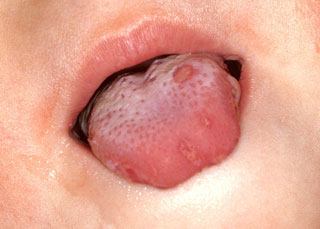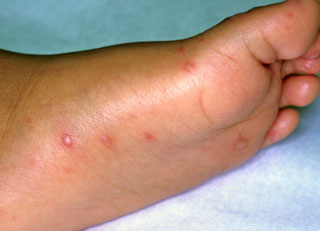Photos

Hand-Foot-and-Mouth Disease (tongue)
This is what hand-foot-and-mouth disease looks like on the tongue. There are sores or blisters on the tongue. Make sure to wash hands often to prevent the spread of the disease.
Source: Self Care Decisions, LLC
From the Dr. William Weston Collection of Pediatric Dermatology. Used with permission.

Hand-Foot-and-Mouth Disease (foot)
This shows the sores or blisters from hand-foot-and-mouth disease on the foot. Make sure to wash hands often to prevent the spread of the disease.
Source: Self Care Decisions, LLC
From the Dr. William Weston Collection of Pediatric Dermatology. Used with permission.